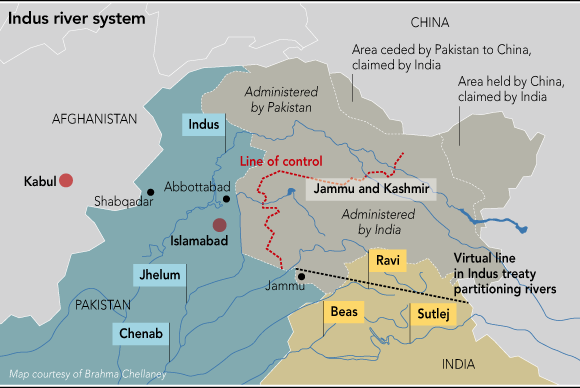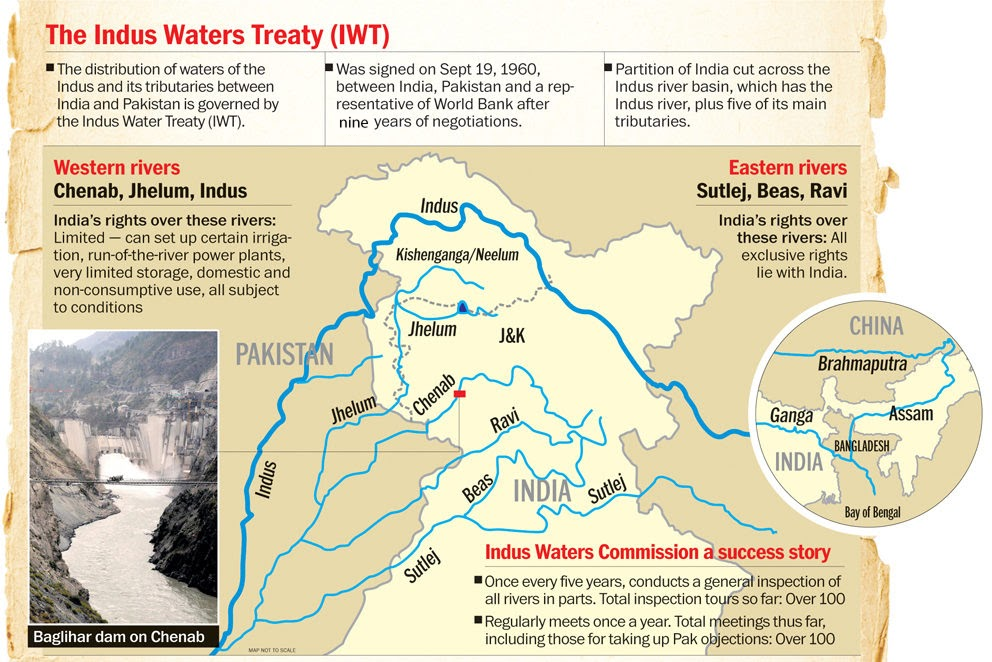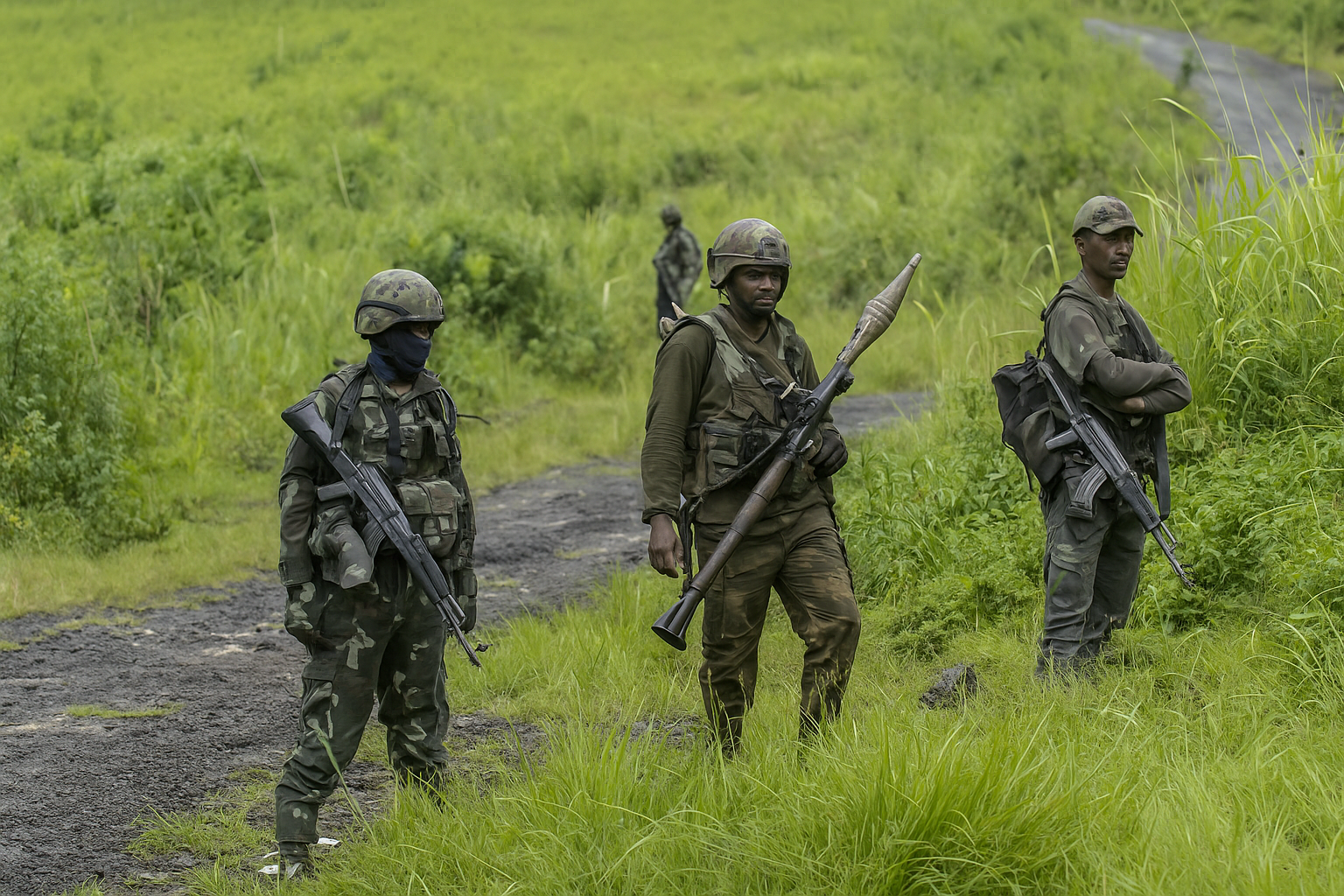





Copyright infringement not intended
Picture Courtesy: https://chellaney.net/2016/08/19/rivers-of-conflict-between-india-and-pakistan/
Context: The Shahpur Kandi Barrage completion redirects water from the Ravi River, previously flowing into Pakistan, to the Indian states of Jammu & Kashmir and Punjab, concluding a project delayed for over three decades.
Key Highlights
Domestic Development Prioritization
Agricultural Productivity
River Disputes between India And Pakistan
|
During the partition of British India in 1947, the rivers of the Punjab region were shared between India and Pakistan. The Indus Water Treaty of 1960 was brokered by the World Bank to regulate and distribute the waters of the Indus River system. |
Indus Water Treaty (IWT)

Disputes and Concerns
|
River Disputes Between India and Pakistan |
||
|
Key Points |
Details |
Significance |
|
Central Treaty |
Indus Waters Treaty (IWT) (1960): Brokered by the World Bank, this treaty divides the Indus River System between India and Pakistan. Eastern Rivers (Ravi, Beas, Sutlej): Allocated to India. Western Rivers (Indus, Jhelum, Chenab): Allocated to Pakistan. |
Provides the framework for water sharing, dispute resolution mechanisms, and cooperative projects. Represents a critical tool for preventing conflict and managing water resources in the region. |
|
Cause of Disputes |
India's infrastructure projects: India's construction of dams, barrages, and hydropower projects on rivers allocated to it under the IWT sparks tensions. Pakistan's concerns: Pakistan fears these projects will significantly reduce water flow into its territory, potentially violating the IWT, and negatively impacting its agriculture and water security. |
These projects highlight competing needs for water and potential flashpoints for disagreement about compliance with the IWT. |
|
Disputed Projects |
Baglihar Dam (Chenab River): Pakistan had concerns about the dam's design impacting water flow into its territory. The issue went to arbitration. Kishenganga/Neelum Project (Jhelum River): Pakistan claims the project diverts water in violation of the IWT, India denies this. The issue is under consideration by the Permanent Court of Arbitration. Shahpur Kandi Barrage (Ravi River): Pakistan disputes the legality of this project and its impact on water flow. |
These specific projects illustrate the technical and legal complexities involved in the river disputes. Demonstrate how disputes are handled within the IWT framework, sometimes including third-party mediation. |
|
Resolution Mechanisms |
IWT Provisions: The treaty includes mechanisms for negotiation, consultation, and neutral experts for dispute resolution. World Bank: The World Bank played a role in brokering the treaty and can provide mediation or facilitate arbitration. International Arbitration: In some cases, disputes may be resolved through the Permanent Court of Arbitration. |
While the IWT offers pathways for resolving issues, finding mutually agreeable solutions requires political will and compromise by both countries. |
|
Challenges & Considerations |
Climate Change: Increasing water scarcity intensifies the importance of water-sharing agreements and exacerbates disputes. Political Factors: Domestic politics and historical tensions between India and Pakistan can impede the resolution of disputes. Need for Cooperation: The transboundary nature of the Indus River system highlights the need for India and Pakistan to cooperate on sustainable water management and resource sharing. |
These broader factors underscore the complexities beyond technical or legal aspects and emphasize the need for a long-term and holistic approach to address water security and conflict prevention. |
Conclusion
Must Read Articles:
INDIA-PAKISTAN RELATIONS: https://www.iasgyan.in/daily-current-affairs/india-pakistan-relations-6
|
PRACTICE QUESTION Q. How can the Indus Waters Treaty be renegotiated or interpreted to balance India's desire for increased hydropower development with Pakistan's concerns about water security and potential downstream impacts? |


© 2025 iasgyan. All right reserved